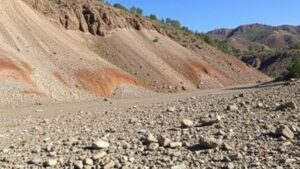The Role of Heavy Mineral Sands in Trapping Fine Gold
The Role of Heavy Mineral Sands in Trapping Fine Gold
Heavy mineral sands play a critical role in the natural processes that trap and concentrate fine gold particles. Often found in riverbeds and coastal regions, these sands are composed of minerals denser than quartz, such as zircon, ilmenite, and rutile. Understanding how heavy mineral sands function can enhance gold recovery methods used in mining and prospecting.
Understanding Heavy Mineral Sands
Heavy mineral sands are naturally occurring concentrations of heavy minerals resulting from the weathering and erosion of rocks. e minerals are more dense than quartz and are often carried by water or wind, eventually settling in water bodies. The predominant minerals found in heavy mineral sands include:
- Zircon: Useful in various industrial applications and can also trap gold.
- Ilmenite: Predominantly used as a source of titanium dioxide.
- Rutile: Another significant source of titanium, known for its high refractive index.
The density of these minerals ranges from about 4.0 to 5.5 grams per cubic centimeter, which is significantly higher than that of gold itself (approximately 19.3 grams per cubic centimeter). This density difference is crucial in the processes through which fine gold is extracted from alluvial deposits.
The Mechanism of Gold Trapping
The natural process of gold trapping involves several physical and chemical interactions. Heavy minerals often settle at the bottom of sedimentary layers due to their weight, creating a favorable environment for fine gold to accumulate. The trapping mechanism can be broken down into these key aspects:
- Mechanical Sorting: As water flows through sediments, the hydraulic forces segregate materials based on density. Heavier materials, such as gold and heavy minerals, are preferentially deposited in areas of lower water flow, like eddies and behind natural barriers.
- Shear Stress and Gold Accumulation: When water flows over a substrate, the shear stress affects the ability of particles to settle. Areas with reduced shear stress allow for the accumulation of fine gold particles alongside heavy mineral sands.
- Chemical Interactions: The surface properties of heavy minerals can also contribute to the adhesion of fine gold particles, enhancing the trapping efficiency. This occurs through complex chemical interactions that facilitate gold attachment.
Real-World Applications of Heavy Mineral Sands in Gold Recovery
In the field of mining and prospecting, understanding the relationship between heavy mineral sands and gold is vital for optimizing recovery techniques. Certain methods effectively utilize these principles:
- Panning: Traditional gold panning exploits the density difference between gold and lighter materials. Heavy mineral sands aid in the separation process, allowing gold to settle at the bottom of the pan.
- Gravity Concentration: Techniques such as sluicing and jigs capitalize on varying particle densities. Optimizing these processes can enhance the recovery of fine gold trapped within heavy mineral sands.
- Electrostatic Separation: This method utilizes the different electrical properties of minerals to separate gold from heavy minerals effectively.
Case studies have shown that areas with high concentrations of heavy mineral sands often yield higher gold grades in alluvial mining. For example, the Murray River regions in Australia have been extensively mined for both heavy minerals and fine gold, demonstrating the interdependence of these resources.
Challenges and Considerations
While heavy mineral sands significantly enhance gold trapping, there are challenges that miners face:
- Environmental Concerns: Mining and processing heavy mineral sands can lead to habitat destruction and water pollution if not managed responsibly.
- Technological Limitations: The efficiency of recovery methods depends on the technology employed, which varies widely across operations.
Miners must balance extraction efficacy with ecological responsibility to minimize adverse impacts on surrounding environments.
Conclusion and Actionable Takeaways
Heavy mineral sands play an essential role in the natural trapping and concentration of fine gold. Knowledge of the sedimentary processes that govern their formation allows miners to optimize recovery techniques, adapting methods such as panning, gravity concentration, and electrostatic separation to maximize efficiency. But, it is equally important that mining operations prioritize environmental sustainability as they harness these resources.
In summary, understanding the interplay between heavy mineral sands and fine gold can lead to improved mining strategies that yield not only higher gold recovery but also contribute to responsible resource management. Prospective miners should consider regional geology, implement modern technologies, and stay attuned to environmental best practices while engaging in mineral extraction activities.



